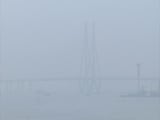Over the decades, Lok Sabha elections have witnessed a significant shift in the landscape of candidate representation. The data reveals a striking trend: while the number of candidates contesting elections has surged, the success rate of independent candidates has plummeted, reflecting a diminishing trust in non-party affiliated contenders.
Rise in Contestants in Lok Sabha Elections
Since the inception of the Lok Sabha polls in 1952, there has been a notable increase in the number of candidates fighting for parliamentary seats. In 1952, 1,874 candidates contested for 489 seats, marking an average of 3.83 candidates per constituency. This figure has steadily risen over the years, with 8,039 candidates competing for 542 seats in the 2019 elections, translating to an average of 14.8 candidates per constituency.
An important turning point in this narrative was the Election Commission's decision to hike the election deposit from a meagre Rs 500 to Rs 10,000 in 1996. This move, aimed at curbing the ballooning number of contestants, indeed had its intended effect. It resulted in a noticeable decline in contenders, particularly in the 1998 Lok Sabha elections, where the total number of contestants dipped below 5,000 after a prolonged surge.
Average Contestants per Seat
The increase in the total number of candidates has also been reflected in the average number of contestants per constituency. Initially ranging from around three to five contestants per Lok Sabha seat until the sixth Lok Sabha elections in 1977, the average has surged over the years. In the last elections held in 2019, there were, on average, 14.8 candidates contesting per constituency across the country.
Rise And Fall of Independent Candidates
However, amidst this surge in participation, there has been a contrasting trend in the success rate of independent candidates. Despite their significant presence in elections, data compiled by the Election Commission of India reveals a consistent decline in the number of independent candidates securing victories since 1952. In the inaugural elections, 37 independent candidates emerged triumphant, constituting around 6.90% of the total votes.
Decline of Independent Lok Sabha MPs
As India's political landscape evolved with the emergence of major national parties like the Bharatiya Janata Party and the Indian National Congress continue to dominate the electoral landscape, smaller regional parties have also gained prominence, contributing to the proliferation of candidates. By the 2019 Lok Sabha elections, their success rate plummeted to a mere 0.11%, with only four independents emerging victorious out of more than 8,000 contenders which include Sumalatha Ambareesh from Mandya in Karnataka, Navneet Rana from Amravati in Maharashtra, Naba Kumar Sarania from Kokrajhar in Assam, and Mohanbhai Sanjibhai Delkar from Dadra and Nagar Haveli. Delkar died in 2021 and was succeeded by his wife Kalaben Delkar.
Rise Of Independent Contestants in Lok Sabha
In contrast to the decline of independent candidates, the overall number of contenders in Lok Sabha elections has surged over the years. From 1,874 candidates in 1952 to 8,039 in 2019, the electoral arena has witnessed a fourfold increase in participation.
Decline of Vote Per Cent Of Independents
Despite the increasing presence of independent candidates in Lok Sabha elections over the years, their vote percentage has been steadily declining. From a high of 15.9% in 1952, it dwindled to a mere 2.6% in 2019. This downward trend highlights a growing reluctance among voters towards non-party-affiliated contenders, underscoring the challenges faced by independent aspirants in garnering electoral support amidst a competitive political landscape















